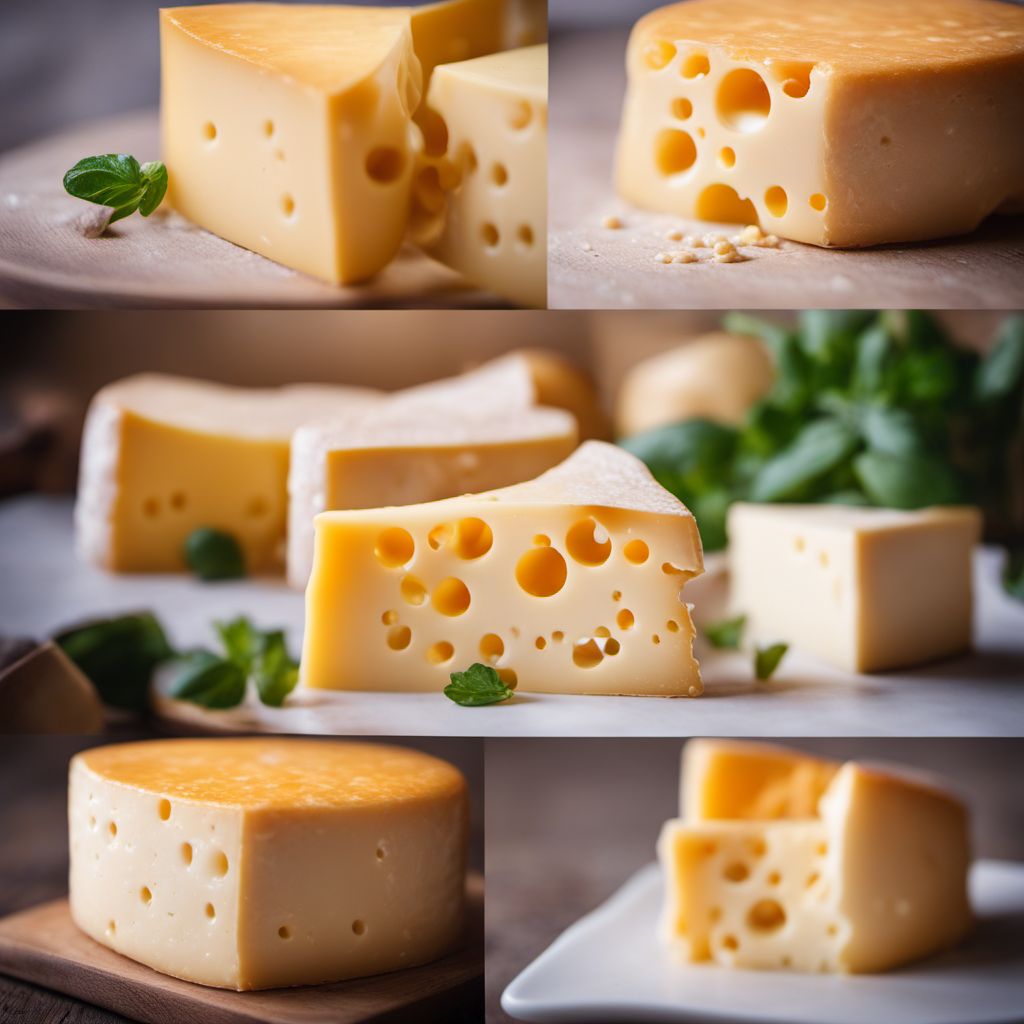
Ingredient
Cheese, morbier
Morbier: The Creamy Delight from the Jura Mountains
Morbier cheese is characterized by its creamy, supple texture and a natural rind. It has a pale yellow to orange interior, with a distinctive layer of edible ash running horizontally through the center. The flavor of Morbier is rich, nutty, and slightly fruity, with a subtle tanginess. Its appearance is visually striking, with the ash layer creating a beautiful contrast between the creamy layers of the cheese.
Origins and history
Morbier cheese originates from the Jura Mountains in France, where it has been produced for centuries. Traditionally, Morbier was made by layering leftover curds from the morning and evening milkings, separated by a layer of ash. This unique process gave the cheese its signature appearance. Today, Morbier is still produced using traditional methods, and it holds a protected designation of origin (PDO) status in France.
Nutritional information
Morbier cheese is a good source of calcium, protein, and essential vitamins. It is relatively high in fat, but the exact nutritional content can vary depending on the specific brand or producer. A typical serving of Morbier cheese provides approximately 100-120 calories, 6-8 grams of protein, and 8-10 grams of fat.
Allergens
Contains milk.
How to select
When selecting Morbier cheese, look for brands or producers that adhere to traditional production methods and use high-quality milk. The cheese should have a fresh, clean aroma, without any off-putting odors. Opt for Morbier with a creamy, supple texture and a well-defined ash layer. Avoid cheeses that appear dry, cracked, or overly aged.
Storage recommendations
To maintain the freshness and quality of Morbier cheese, store it in the refrigerator at a temperature between 35°F to 45°F (2°C to 7°C). Keep the cheese wrapped in wax or parchment paper to allow it to breathe. Consume Morbier within 1-2 weeks of purchase for optimal taste and texture.
Preparation tips
Morbier cheese can be enjoyed on its own or paired with various accompaniments. It is commonly served on cheese boards, accompanied by crusty bread, fresh fruits, or honey. Morbier melts beautifully, making it a great addition to grilled cheese sandwiches, quiches, or savory tarts. It can also be used in fondue or melted over roasted vegetables for a creamy, indulgent twist.
Substitutions
Brie, raclette, or fontina cheese can be used as substitutes for Morbier, although they may not replicate the exact flavor or appearance of the original cheese. However, if Morbier is not available, any creamy, semi-soft cheese with a mild to medium flavor can be used as a substitute.
Culinary uses
Morbier cheese is commonly used in French cuisine, particularly in the regions of Jura and Franche-Comté. It is enjoyed on its own, as part of a cheese platter, or incorporated into various dishes. Morbier is a versatile cheese that can be used in both sweet and savory recipes, adding a creamy, nutty flavor to dishes like quiches, gratins, and salads.
Availability
Morbier cheese is primarily produced in the Jura Mountains region of France. It is also available in specialty cheese shops and gourmet markets worldwide. Additionally, some artisanal producers outside of France have started making Morbier-style cheeses.
More ingredients from this category » Browse all

Cheese, nagelkaas
Nagelkaas - The Dutch Delight of Spiced Cheese

Cheese, tronchon
The Art of Tronchon: A Savory Cheese Delight

Cheese, double gloucester
Rich and Creamy Delight

Cheese, fontina
Fontina: The Creamy Delight

Cheese, carrigaline
Irish Delight

Cheese, mimolette
Mimolette: The Bold and Nutty Delight

Cheese, morski
The Oceanic Delight: Exploring the Unique Flavors of Morski Cheese

Cheese, arzua ulloa
The Creamy Delight

Cheese, white stilton
The Creamy Delight

Cheese, raschera
The Creamy Delight: Unveiling the Secrets of Raschera Cheese

Cheese, beaufort
Beaufort: The Alpine Delight

Cheese, lubelski
The Creamy Delight: Exploring the Richness of Lubelski Cheese
Recipes using Cheese, morbier

Malaysian Spicy Noodle Soup
Fiery Delight: Malaysian Spicy Noodle Soup

Spicy Cabbage Salad with a Twist
Fiery Krautsalat: A Spicy Austrian Twist

Wagyu Katsu Sando
Indulgent Wagyu Katsu Sandwich: A Japanese Delight

Filipino Chinese-Inspired Cabbage Salad
Crispy Crunchy Cabbage Delight

Baltic-style Stir-Fried Vegetables with Soy Sauce
Savory Baltic Veggie Medley: A Fusion of Flavors

Urap Asunción Style
Tropical Delight Urap: A Fusion of Indonesian and Asunción Flavors

Slovenian Jota Soup
Hearty Jota: A Taste of Slovenian Comfort

Chinese-inspired Moravska Salad
Sesame-infused Moravska Salad: A Fusion of Czech and Chinese Flavors